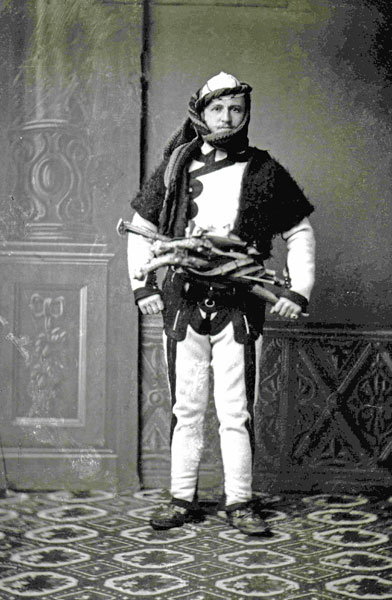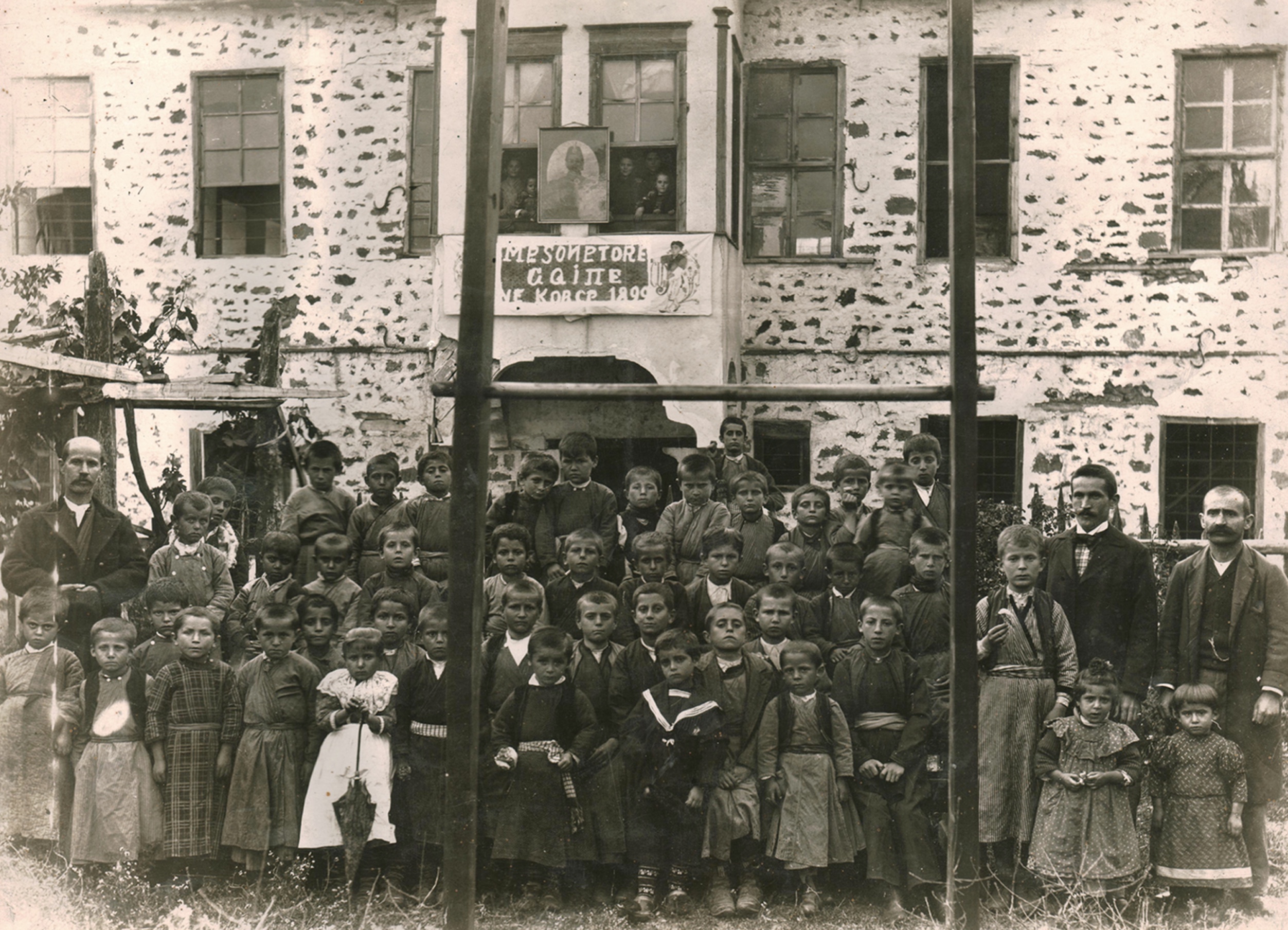|
Congress Of Elbasan
The Congress of Elbasan (), also known among Albanians as the Congress of the Albanian schools (''Kongresi i shkollave shqipe''), was held from 2 to 8 September 1909 in Elbasan, today's Albania, back then part of the Vilayet of Monastir of the Ottoman Empire. The congress, sponsored by the local ''Bashkimi'' literary club, was attended by 35 delegates from central and southern Albania. The congress aimed to address issues linked to Culture of Albania, culture and Education in Albania, education. The delegates came to a decision that the Manastir club had to introduce the Albanian language in all schools in Albania. The Congress of Manastir had chosen the Latin script as the one to be used to write the language. In addition, the delegates decided to request all the Albanian journalists and publicists to use only the dialect of Elbasan. A very important result of the congress was the establishment of a school for teachers, known as Shkolla Normale e Elbasanit. The school was decided ... [...More Info...] [...Related Items...] OR: [Wikipedia] [Google] [Baidu] |
Elbasan
Elbasan ( , ; sq-definite, Elbasani, ) is the fourth most populous city of Albania and seat of Elbasan County and Elbasan Municipality. It lies to the north of the river Shkumbin between the Skanderbeg Mountains and the Myzeqe Plain in central Albania. Etymology The name (in the form also in Aromanian) is derived from the Ottoman Turkish ("the fortress"). History In August 2010 archaeologists discovered two Illyrian graves near the walls of the castle of Elbasan. In the second century BC, a Roman trading post recorded in Latin as ''Mansio Scampa'' (also in ) near the site of modern Elbasan developed close to a junction of two branches of an important Roman road, the Via Egnatia, which connected the Adriatic coast with Byzantium. It was one of the most important routes of the Roman Empire. By the third or fourth century AD, this place had grown into a real city protected by a substantial Roman fortress with towers; the fort covered around 300 square meters. Th ... [...More Info...] [...Related Items...] OR: [Wikipedia] [Google] [Baidu] |
Albanian Language
Albanian (Endonym and exonym, endonym: , , or ) is an Indo-European languages, Indo-European language and the only surviving representative of the Albanoid, Albanoid branch, which belongs to the Paleo-Balkan languages, Paleo-Balkan group. It is the native language of the Albanian people. Standard Albanian is the official language of Albania and Kosovo, and a co-official language in North Macedonia and Montenegro, where it is the primary language of significant Albanian minority communities. Albanian is recognized as a minority language in Italy, Croatia, Romania, and Serbia. It is also spoken in Greece and by the Albanian diaspora, which is generally concentrated in the Americas, Europe and Oceania. Albanian is estimated to have as many as 7.5 million native speakers. Albanian and other Paleo-Balkan languages had their formative core in the Balkans after the Indo-European migrations in the region. Albanian in antiquity is often thought to have been an Illyrian language for ob ... [...More Info...] [...Related Items...] OR: [Wikipedia] [Google] [Baidu] |
Congress Of Dibër
The Congress of Dibër (original name promoted by the Ottoman authorities: Ottoman-Albanian Joint Constitutional Congress) was a congress held by members of Albanian committee in Debar (then part of the Ottoman Empire, now part of North Macedonia) from July 23 to July 29, 1909. The congress was chaired by Vehbi Dibra, Grand Mufti of the Sanjak of Dibra and was sponsored by the government of the Young Turks. It was held on the first anniversary of the Young Turk Revolution and was a countermeasure on the Latin script based Albanian alphabet which came out of the Congress of Manastir. Background In 1908, an alphabet congress in Manastir agreed to adopt a Latin character-based Albanian alphabet and the move was considered an important step for Albanian unification.. Some conservative Albanian Muslims and clerics opposed the Latin alphabet and preferred an Arabic-based Albanian one because they were concerned that a Latin script undermined ties with the Muslim world.. For the Ottom ... [...More Info...] [...Related Items...] OR: [Wikipedia] [Google] [Baidu] |
Albanian Nationalism
Albanian nationalism is a general grouping of nationalism, nationalist ideas and concepts generated by ethnic Albanians that were first formed in the 19th century during the Albanian National Awakening (). Albanian nationalism is also associated with similar concepts, such as Albanianism. "Henceforth, Hoxha announced, the only religion would be "Albanianism." Hoxha was using nationalism as a weapon in his struggle to break out of the Soviet bloc." ("Shqiptaria") and Pan-Albanianism, that includes ideas on the creation of a geographically expanded Albanian state or a Greater Albania encompassing adjacent Balkans, Balkan lands with substantial Albanian populations. The onset of the Great Eastern Crisis (1875–1878), which threatened the partition of Albanian-inhabited lands of the Balkans by neighbouring Orthodox Christian states, stimulated the emergence of the Albanian National Awakening and the nationalist movement... para. 5.... "Due to religious ties of the Albanian majority po ... [...More Info...] [...Related Items...] OR: [Wikipedia] [Google] [Baidu] |
Albanian National Awakening
The Albanian National Awakening ( or ), commonly known as the Albanian Renaissance or Albanian Revival, is a period throughout the 19th and 20th century of a cultural, political, and social movement in the Albanian history where the Albanian people gathered strength to establish an independent cultural and political life, as well as the country of Albania. Prior to the rise of nationalism, Albania remained under the rule of the Ottoman Empire for almost five centuries and the Ottoman authorities suppressed any expression of national unity or institutional national conscience by the Albanian people. There is some debate among experts regarding when the Albanian nationalist movement should be considered to have started. Some sources attribute its origins to the revolts against centralisation in the 1830s, others to the publication of the first attempt by Naum Veqilharxhi at a standardized alphabet for Albanian in 1844,Zhelyazkova, Antonina (2000). "Albanian Identities". So ... [...More Info...] [...Related Items...] OR: [Wikipedia] [Google] [Baidu] |
Second Congress Of Manastir
The Second Congress of Manastir () was an Albanians, Albanian congress held on 2–3 April 1910 in Manastir, back then Ottoman Empire, today's Bitola in the Republic of North Macedonia. It dealt with the challenges that the Albanian language and schools faced at the time within the context of the empire, and the platform to overcome them. Background The First Congress of Manastir of 14–22 November 1908, known as the congress of the Albanian alphabet, established a Latin script based alphabet to be used as a standard for Albanian writings, marking an important moment in the history of the Albanians. It was accepted with enthusiasm by the Albanian patriotic circles, but was not welcomed by the Ottoman authorities, the Greek Orthodox Church (there was no Albanian Orthodox church back then), and the pro-Turkish Muslim leaders. The Ottomans organized a joint Ottoman-Albanian congress in July 1909, known as the Congress of Dibra. It was seen as an attempt to convince the Muslim Albanian ... [...More Info...] [...Related Items...] OR: [Wikipedia] [Google] [Baidu] |
Albanian Historiography
The Historiography of Albania () or Albanian historiography () refers to the studies, sources, critical methods and interpretations used by scholars to study the history of Albania and Albanians. Influence of Germany and Austria-Hungary Theodor Anton Ippen, who would become a consul of Austria-Hungary in Scutari between 1897 and 1903, belonged to the group of Albanologists whose works were published through the state-financed institutes of Austria-Hungary. He participated in writing and disseminating the first history of Albania published on the Albanian language because he insisted that it would be beneficial for the awakening of the Albanian national consciousness and therefore for the Dual Monarchy. Ippen struggled for the establishment of an independent nation-state of Albanians. Modern Albanian historiography There are two main sources of modern Albanian historiography: intellectuals from the Albanian National Awakening (''Rilindja'') period and historians from the regi ... [...More Info...] [...Related Items...] OR: [Wikipedia] [Google] [Baidu] |
Korçë
Korçë (; sq-definite, Korça) is the List of cities and towns in Albania, eighth most populous city of Albania and the seat of Korçë County and Korçë Municipality. The total population of the city is 51,152 and 75,994 of Korçë municipality (2011 census), in a total area of . It stands on a plateau some Above mean sea level, above sea level, surrounded by the Morava Mountains. The area of the Old Bazaar of Korçë, Old Bazaar, including Mirahori Mosque, Korçë, Mirahori Mosque, is considered as the urban core of the city. Founded by the local Ottoman Empire, Ottoman Albanians, Albanian nobleman Iljaz Bej Mirahori, Ilias Bey Mirahori, the urban area of Korçë dates back to the late 15th century and the beginning of the 16th century, however its actual physiognomy was realized in the 19th century, during a period that corresponds with the rapid growth and development of the city. The Old Bazaar has played a dominant role in Albania's market history. Korçë is the larges ... [...More Info...] [...Related Items...] OR: [Wikipedia] [Google] [Baidu] |
Ohrid
Ohrid ( ) is a city in North Macedonia and is the seat of the Ohrid Municipality. It is the largest city on Lake Ohrid and the eighth-largest city in the country, with the municipality recording a population of over 42,000 inhabitants as of 2002. Ohrid is known for once having 365 churches, one for each day of the year, and has been referred to as the "Jerusalem of the Balkans"."The Mirror of the Macedonian Spirit, Zlate Petrovski, Sašo Talevski, Napredok, 2004, , page 72: "... and Macedonia in the Cathedral Church St. Sofia in the Macedonian Jerusalem — Ohrid..." The city is rich in picturesque houses and monuments, and tourism is predominant. It is located southwest of Skopje, west of Resen and Bitola. In 1979 and in 1980, respectively, Ohrid and Lake Ohrid were accepted as Cultural and Natural World Heritage Sites by UNESCO. Ohrid is one of only 40 sites that are part of UNESCO's World Heritage that are Cultural as well as Natural sites. Name In antiquity the ... [...More Info...] [...Related Items...] OR: [Wikipedia] [Google] [Baidu] |
Rexhep Voka
Rexhep is an Albanian masculine given name. People bearing the name include: * Rexhep Pasha Mati (1842–1908), Ottoman marshal, governor, war minister, revolutionary * Rexhep Demi (1864–1929), member of the Albanian independence movement, politician * Rexhep Jella, Albanian politician, former mayor of Tirana * Rexhep Jusufi (died 1943), Albanian-Yugoslav World War II partisan *Rexhep Maçi (1912–1980), Albanian football player * Rexhep Meidani (born 1944), Albanian politician, third President of Albania *Rexhep Mitrovica Rexhep Mitrovica (15 January 1888 – 21 May 1967) was a Prime Minister of Albania's government under Nazi Germany. Biography Prime minister After German occupation of Albania, on 6 November 1943, Berlin Berlin ( ; ) is the Capital of Ge ... (1887–1967), Albanian politician, 18th Prime Minister of Albania * Rexhep Qosja (born 1936), Albanian politician and literary critic * Rexhep Voka (1847–1917), Albanian writer, activist and scholar Alb ... [...More Info...] [...Related Items...] OR: [Wikipedia] [Google] [Baidu] |
Sevasti Qiriazi
Sevasti Qiriazi-Dako (Sevasti D. Kyrias) (ca. 1871–1949) was an Albanians, Albanian patriot, educator, Protestant missionary, author, pioneer of Albanian female education, and activist of the Albanian National Awakening. Life and early career Early life Sevasti was born #Myths,_inaccuracies_and_inconsistencies, ca. 1870 to the patriotic Kyrias Family, Qiriazi family of Trnovo, Bitola, Tërnovë, Monastir, Macedonia, Monastir, in today's North Macedonia, then Ottoman Empire. She was the sixth of ten children. Her family's religious background was Greek Orthodox Church, Orthodox, and she began attending a Greek-language primary school at age four. In her youth she learned several languages (Albanian language, Albanian, Greek language, Greek, Bulgarian language, Bulgarian, Wallachian dialect, Wallachian, Turkish language, Turkish, English language, English). She and her family came into close contact with Albanian patriots and American Protestant missionaries who operated a school ... [...More Info...] [...Related Items...] OR: [Wikipedia] [Google] [Baidu] |






